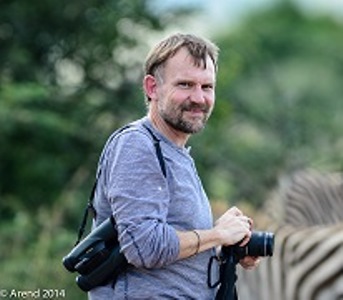October 2016
These included Appendix I listings for African grey parrots, all eight species of pangolin, and barbary macaques. Silky and thresher sharks and Mobula rays were listed on Appendix II, as were a huge number of rosewood and palisander tree species that are being devastated for the timber trade. A host of reptiles and amphibians, many of which are in demand for the exotic pet trade and are seriously threatened, were listed or had their protection level increased.
CITES is an international agreement between governments. Its stated aim is to ensure that international trade in specimens of wild animals and plants does not threaten their survival. The Convention certainly has its faults and its detractors, and the decisions it makes are often steeped in politics and vested interests. Nevertheless, it is remarkable that almost all of the world’s governments agree to implement its provisions. It’s also the only agreement of its kind to have real teeth in the form of trade bans on Parties that don’t comply.
The triennial meeting, held in Johannesburg, was attended by government delegations from most of the 182 member countries (Parties), alongside an army of ‘observers’ from intergovernmental organisations, animal protection groups, wildlife trade proponents, scientists, the media and others.
This particular meeting has, arguably, been one of the more successful in terms of species protection. Attempts by trade proponent countries to downgrade existing protection for peregrine falcons, and to create a legal trade in horns from Swaziland’s rhinos, were defeated.
Of course, there were some disappointments.
A proposal to ban all international trade in Africa’s beleaguered lions was severely watered down. While a moratorium on commercial exports of products from wild lions was agreed, by continuing to allow trade in bones from captive-bred lions, the Parties may have opened the door for products from hunted or poached wild lions and other endangered big cats to be laundered into trade, as well as making it harder to shut down the cruel, intensive lion breeding operations in South Africa.
The European Union blocked attempts to return the populations of elephants in Botswana, South Africa, Namibia and Zimbabwe to CITES Appendix I, where all other elephant populations are listed. The EU tried to justify its action on the basis that a de facto international ban on ivory trade already exists; nevertheless an opportunity to send a clear message that ivory is not for sale, now or at any time in the foreseeable future, was missed as a result.
However, in other respects good decisions were made in relation to elephants. Attempts by Namibia and Zimbabwe to allow them to trade ivory were blocked, the Convention sent strong signals that domestic ivory markets should be shut down, the development of a mechanism to decide on future ivory trading was abandoned, and measures to improve the effectiveness of National Ivory Action Plans and increase the scrutiny of live elephant trade were agreed.
CITES isn’t just about listing species on the Appendices. A total of 87 documents were also submitted for consideration at the meeting, covering everything from rules of procedure to capacity building, enforcement, measures to combat illegal trade and reduce demand for wildlife products, and the engagement of local communities. The rules concerning the export of hunting trophies were tightened up following negotiations between the EU and South African delegations. A new process for investigating bogus claims for captive breeding was established. There will be an investigation into whether trade is a threat to African wild dogs, and measures were agreed that should help tackle the illegal trade in cheetahs, helmeted hornbills, rhinos and tigers.
It was also gratifying to see attention being given to the welfare of live animals in trade. While the Convention contains a number of animal welfare-related provisions, there has, to date, been little information or guidance on their implementation, and little appetite amongst Party governments or the CITES Secretariat to discuss them. However, under Secretary-General John Scanlon’s leadership, the CITES Secretariat has been highlighting welfare issues in recent months, and Born Free and its partners have taken full advantage.
As we leave Johannesburg and look towards the 18th CITES Conference in Sri Lanka in 2019, the Born Free team will continue to work with governments and all the stakeholders to ensure this complex but vital process continues and that the positive momentum achieved over the last two weeks is maintained.
Mark Jones
Chair, Wildlife Crime and Trade Group
Associate Director, Multilateral Environmental Agreements and UK Wildlife, Born Free Foundation
Find me on twitter @fishvetmj
The opinions expressed in this blog are the author’s and not necessarily those of the wider Link membership.
Aspects of this blog were originally published on another website.




Latest Blog Posts